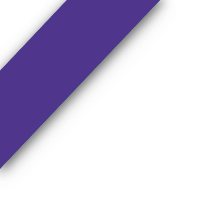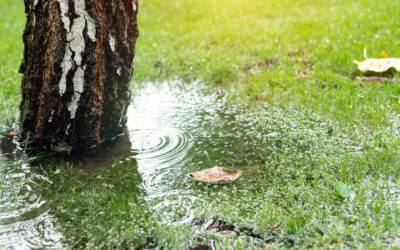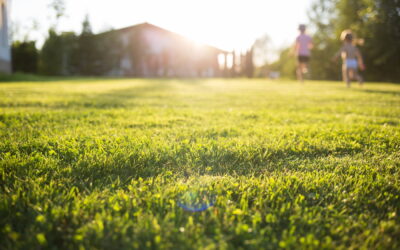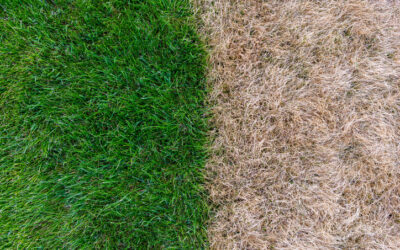Lawn Care
75% off 2025 Final Lawn Care Application
(with the purchase of a full 2026 lawn care program)
Our Personalized Lawn Care Program
Early Spring
Our technicians will fertilize and apply crabgrass and broadleaf weed control to kickstart the beginning of the season.
Late Spring
Summer
Late Summer
Fall
Schedule Your Free Lawn Evaluation Today
Additional services include:
Seeding and Aeration, Power Raking, Lime, Grub Control, Tick Control Programs, Fungicide Programs, Nutsedge Control, Post Crabgrass Control, Driveway Spraying, Insect Control, Geese Control, Deer Repellent, Ornamental Tree and Shrub Care Programs including a Dormant Oil Program, Root Zone Fertilization Program, Insect and Disease Program, and Winter Burn Prevention. We also offer Organic Programs for Lawn, Tick and Ornamental Tree and Shrub Care.

Fertilization
Fertilizer is the key to helping achieve a healthy lawn with vigorous plant growth and development that is green and strong enough to withstand the stresses of the seasons. Hiring a professional lawn care company, with the proper education, licensing and knowledge of the types of fertilizer your lawn needs, applied at the proper time and rate throughout the year, is a smart decision. Tuff Lawn wishes to partner with you so that you may have a healthy, beautiful lawn to enjoy for years to come.
Fertilization practices focus on the supply of three primary nutrients – nitrogen, phosphorus, and potassium. Nitrogen makes the grass plant grow and become green, phosphorus stimulates root development and potassium helps to protect the plant from disease and drought. Lawns that are discolored, slow-growing and are heavily infested with weeds may not be properly fertilized.
We select the right analysis of fertilizer, as well as the right time and rate, that will provide the proper nutrients for a healthy, beautiful lawn.
Let the Tuff Lawn experts design a program that is best for your lawn.

Organic Programs
For the times where an Organic Lawn Program is needed, let the experts at Tuff Lawn develop a personalized organic lawn care program to provide your lawn with exactly what is needed throughout the year to maintain a healthy, beautiful lawn.
Here’s what we’ll do…
Early Spring - Apply 100% organic, natural biofertilizer formulated to provide nutrients to turf grass. It contains NPK fertility derived from organic and natural sources, and includes beneficial rhizosphere bacteria to boost biological soil fertility. This will provide rich organic matter and active bacteria to depleted soils. No chemicals, no manure or sewage sludge.
Late Spring - Apply 100% organic, natural biofertilizer formulated to provide nutrients to turf grass. It contains NPK fertility derived from organic and natural sources, and includes beneficial rhizosphere bacteria to boost biological soil fertility. This will provide rich organic matter and active bacteria to depleted soils. No chemicals, no manure or sewage sludge. We will inspect the lawn for insect activity/damage. If we detect an issue, we will call you to discuss treatment options.
Summer - Apply 100% organic, natural biofertilizer formulated to provide nutrients to turf grass. It contains NPK fertility derived from organic and natural sources, and includes beneficial rhizosphere bacteria to boost biological soil fertility. This will provide rich organic matter and active bacteria to depleted soils. No chemicals, no manure or sewage sludge. We will inspect the lawn for insect activity/damage. If we detect an issue, we will call you to discuss treatment options.
Late Summer - Apply 100% organic, natural biofertilizer formulated to provide nutrients to turf grass. It contains NPK fertility derived from organic and natural sources, and includes beneficial rhizosphere bacteria to boost biological soil fertility. This will provide rich organic matter and active bacteria to depleted soils. No chemicals, no manure or sewage sludge. We will perform a soil analysis.
Fall - Apply 100% organic, natural biofertilizer formulated to provide nutrients to turf grass. It contains NPK fertility derived from organic and natural sources, and includes beneficial rhizosphere bacteria to boost biological soil fertility. This will provide rich organic matter and active bacteria to depleted soils. No chemicals, no manure or sewage sludge.
Special Note: This organic program does not address the issues of weeds, crabgrass and insects that may arise in a complete fertilization program. The guarantee of our Basic Lawn Program does not apply. Spring and Fall Lime is recommended on an annual basis. Seeding and Aeration is also a recommended addition to this fertilization-only program and will help to better maintain the lawn. (Guarantee restrictions apply.)

Seeding and Aeration
Let us help your lawn breathe easier when we seed. Most people understand that regular feeding, weed control and proper mowing and watering helps to maintain a thick, healthy, green and beautiful lawn. But did you know that aeration, along with seeding, is just as important. Let us punch your lawn full of holes. Aeration removes soil cores from your lawn and deposits them above the thatch layer. These cores are about ½” in diameter and about 2 - 3” long. This allows your lawn to breathe and better absorb water and fertilizer. This is especially important as Connecticut soils tend to become easily compacted. The soil plugs break down and mix back into the lawn. The new seed germinates and grows better in loose and open soil allowing stronger root development.

Weed and Crabgrass Control
One of the most beautiful parts of any really great lawn is what isn’t there…the things that are missing can give your lawn the smooth, even color and texture that makes it look like it is a deep-green carpet, especially after mowing.
Not having weeds and crabgrass, the infamous invaders of an otherwise beautiful lawn, is what we are talking about.
Weeds and crabgrass quickly develop into unsightly clumps of stalky stems and broad blades that can smother the good grasses. Left alone, weeds and crabgrass die at the end of the season, leaving dead patches in the lawn, but only after producing and dropping thousands of seeds into the soil. This is where prevention is better than a cure. That is what pre-emergents do. They create a barrier to stop weeds as they sprout. A second application of a post-emergent will stop these sprouted nuisances from taking over the lawn.
It can take one to two years to have a lawn that is healthy and looking good as we control these nuisance annual weeds and crabgrass.

Grub Control
Grubs are a commonly found problem in lawns, in our area. If left untreated, they may cause quick and severe damage. Grubs live and feed on the turf root system and brown patches begin to appear. Grubs are the larval (worm) state of many types of beetles. Grubs do not disappear on their own. The cycle of beetle to grub to beetle continues each year. A preventative grub application is the best protection from severe damage to your lawn. If you begin noticing brown patches, a quick diagnosis and treatment are necessary to avoid costly damage to your lawn.
A combination of good watering, mowing, fertilization and preventative grub practices helps the plant survive and recover from these types of attacks. Often, when large and damaging populations of insects are present, preventative control treatments are recommended and should be applied each year, for optimal results. Checking your lawn frequently for unusual browning, and contacting us if you see damage, is the key to minimizing costly damage to your lawn. Let the experts at Tuff Lawn properly identify and provide these control treatments.

Disease Management/Fungicide
The presence of mysterious yellowing of your lawn, red or brown spots, growths on stems or the trunk of a favorite shrub many times indicates a plant disease. There are over 50,000 different types of plant diseases.
There are two types of diseases: non-parasitic and parasitic diseases. Non-parasitic diseases are the result of genetic or environmental factors like nutrient deficiencies, extreme weather conditions, mechanical injury (dull mower blades) or lack of water. These types of diseases can be controlled by correcting the condition that causes the disease. Parasitic diseases are caused by living organisms that survive and spread by infecting other plants. These are fungi, bacteria and viruses.
Temperature and moisture are probably the most important factors affecting plant disease. Symptoms can be overdevelopment or underdevelopment of tissue (yellowing or dwarfing), or the plant dying.
Many diseases appear during certain times of the year. Our experience allows us to quickly identify and treat them before major damage occurs. Keeping your lawn and landscape well-fed and properly watered helps discourage disease infections, but even the healthiest and best cared for lawns and landscape can be devastated by disease, if left untreated. Chemicals are often used to stop the disease before it completely damages the plant. Treatment programs can be preventative or curative. Let the experts at Tuff Lawn determine which is best for your lawn and landscape to keep it healthy.

Insect Control
There are many forms of insect control in practice. We are careful to target and use pesticides in combination with other control methods such as proper watering and mowing and promoting and growing healthy turf and landscape plants. It doesn’t make sense to try to be completely pest-free. Besides being impossible to achieve, it also destroys insects and bacteria that are beneficial and necessary for long-term, good plant health.
We strive for pest control that is intelligent, efficient, and balanced. We follow the Integrated Pest Management practices to achieve this goal:
Inspection: Checking for brown patches, wilted leaves and other signs of insect activity.
Identification: Knowing what kind of insect is found. There are thousands of insects, some that can do major damage to the lawn and landscape. Grubs are easy to spot, but some types of wood-boring insects can be difficult to identify. Our licensed and professionally-trained technicians know how to identify these insects.
Treatment: While good watering, mowing and fertilization practices help plants survive and recover from attacks, often control treatments are necessary and recommended to stop large and damaging populations of insects. We will advise you on the recommended treatments available.
Prevention: Selecting turf and plants that are less likely to be attacked by insects in our area is our expertise. Knowing our particular growing conditions, including sun, shade and soil type, allows us to recommend the best practices for your lawn and landscape. Good watering and mowing practices make a great deal of difference in prevention, along with proper treatment
Evaluation: With your help, we can diagnose and check how effective our program has been and decide if additional or different efforts may be needed. Call the experts at Tuff Lawn when you see changes in the lawn or landscape so that we may immediately diagnose and treat any potential problems that may arise.

Chinch Bugs
Chinch Bug damage is usually first detected when irregular patches of turf begin to turn yellow then straw-colored. The straw-colored areas may be completely dead. These patches continue to become larger, in spite of watering. Damage generally occurs during hot, dry weather from June into September.
Inspecting for Chinch Bugs
Scout turf on sunny days by slowly sliding your foot through the sod and watching for the bugs to crawl across your shoe. You can also determine infestations by using a large coffee can or gallon can with both ends removed. Press one end of the can about 2 or 3 inches into the soil, fill with soapy water and watch for about 5 minutes. If chinch bugs are present, they will float to the surface. (This test will also bring mole crickets to the surface.) Be sure to check areas where the yellowish spots and green grass meet in several different locations. If you suspect Chinch bug damage, give us a call and let the experts at Tuff Lawn diagnose and treat this before major damage is done.

Geese Control
Whether at work, school, or play, no one should have to walk through Canadian Geese droppings. Protect your children, property, health, and the geese. Do not feed geese or play in areas containing feces or nesting geese.
For a free quote of an effective and humane Canadian Geese repellent, let the experts at Tuff Lawn provide you with a quote to deter these pests.

Deer Repellent
Protect your landscape plantings from Deer and the damage they cause!
Deer are foraging and destroying our landscape plantings at an alarming rate, this year. We continuously receive calls from customers looking for a solution to help stop the damage.
Deer have adapted well to our neighborhoods and are not deterred by human activity. Your beautiful ornamental trees and shrubs have become a delightful smorgasbord for their voracious appetites. As their food supply diminishes, they become more dependent on your landscape plantings.
How do we combat this problem? It is best to use a combination of deer deterrents to achieve the best outcome. We apply an application of deer spray in the fall, winter and spring which helps to prevent deer from browsing on your ornamental trees and shrubs We can also advise which plantings are best suited for which areas of your landscape.
Let the experts at Tuff Lawn provide you with a Deer Repellent Program to help prevent deer from damaging your landscape plantings.

Lime
Lime “sweetens” the soil. In areas where soil is naturally “sour” (acidic), lime is a necessity for growing healthy turf. Lime helps to improve lawn color and density. It also helps to control thatch and increases root development. Our lime application helps to keep the soil chemistry in balance.
When your soil pH is too low (acidic), it can cause fertilizer lock-up. Fertilizer and other important micro-nutrients become locked up in the soil and are unavailable to the grass plant. The grass may seem thin and yellow, while thatch is building up faster and the root development has slowed down.
We suggest annual liming for the acidic soils in our area. It helps everything else we do work even better.

Soil Testing
Lawns that experience chronic growth problems may have poor nutrients in the soil. All soils are not created equal. In fact, soil is constantly changing. Nutrient elements in soil can become diminished due to plant growth, leaching or erosion. The best way to determine if your soil is supplying the required nutrients for healthy plant growth is to perform a soil test. This lets us know what nutrients may or may not need to be added to the soil.
We sample areas of your lawn and send them off to the University of Connecticut’s Plant Science Division for a complete analysis. We will send you a copy of the soil analysis and the recommendations, when we receive them. By professionally testing the soil, we can provide your lawn with the ideal nutrient amounts for proper growth.

Liquid Aeration

Frequently Asked
Questions
Your Title Goes Here
Your content goes here. Edit or remove this text inline or in the module Content settings. You can also style every aspect of this content in the module Design settings and even apply custom CSS to this text in the module Advanced settings.
Should I mow my lawn when it’s wet?
Your content goes here. Edit or remove this text inline or in the module Content settings. You can also style every aspect of this content in the module Design settings and even apply custom CSS to this text in the module Advanced settings.
Does someone need to be home when you come?
Your content goes here. Edit or remove this text inline or in the module Content settings. You can also style every aspect of this content in the module Design settings and even apply custom CSS to this text in the module Advanced settings.
How will you determine my price?
Your content goes here. Edit or remove this text inline or in the module Content settings. You can also style every aspect of this content in the module Design settings and even apply custom CSS to this text in the module Advanced settings.
Do you provide weekend services?
Your content goes here. Edit or remove this text inline or in the module Content settings. You can also style every aspect of this content in the module Design settings and even apply custom CSS to this text in the module Advanced settings.
What happens if it rains?
Your content goes here. Edit or remove this text inline or in the module Content settings. You can also style every aspect of this content in the module Design settings and even apply custom CSS to this text in the module Advanced settings.
How many times will you have to come to keep my lawn healthy and lush?
Your content goes here. Edit or remove this text inline or in the module Content settings. You can also style every aspect of this content in the module Design settings and even apply custom CSS to this text in the module Advanced settings.
Blog
Storm Proof Your Lawn
Severe weather can wreak havoc on your property, and your lawn is often the first to face the impact of high winds and heavy rain. A beautiful, healthy lawn can be...
What Lawn Pests Come Out in Late Summer in Norwalk, CT?
As summer ends in Norwalk, Connecticut, many homeowners feel relieved that lawn care season is almost over. But late summer brings a new wave of challenges—lawn pests. These...
5 Reasons Why Your Grass Is Not Growing
A lush green lawn is the dream of every homeowner, but sometimes grass refuses to cooperate. If your yard is struggling to thrive, there could be a few culprits behind the...
Proudly Serving Communities Across Fairfield County
![]() Cos Cob
Cos Cob
![]() Darien
Darien
![]() Fairfield
Fairfield
![]() Greenwich
Greenwich
![]() New Canaan
New Canaan
![]() Norwalk
Norwalk
![]() Old Greenwich
Old Greenwich
![]() Redding
Redding
![]() Riverside
Riverside
![]() Southport
Southport
![]() Stamford
Stamford
![]() Weston
Weston
![]() Westport
Westport
![]() Wilton
Wilton




